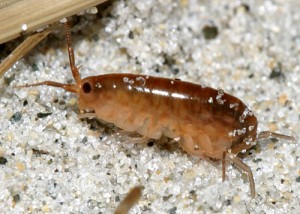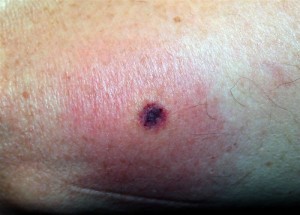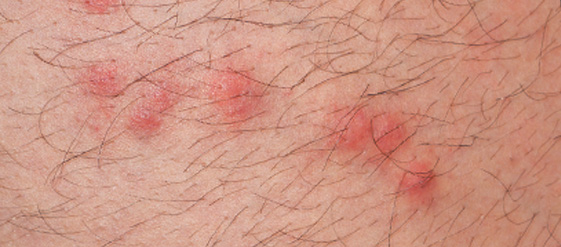What Are Sand Flea Bites?
Sand flea bites result from sand fleas, which are mainly found in areas like the beaches and marshy places. Sand fleas may also be found in dessert areas. They can move from the beaches and attack homes. These creatures are pretty harmful, particularly those of North Pacific. When they invade a home, they may attack your pets and you too. 16

Sand fleas aren’t insects as we find with most typical fleas, they are tiny animals that look like fleas and their bites too are similar to those of fleas. Sand fleas are parasitic crustaceans with varying sizes – some may appear small like the size of a ground pepper grain and others may appear bigger like a rice grain. Some can be seen with your eyes but others would require a magnifying instrument to see them. Because these creatures are found on sandy areas, they tend to bite parts of body closest to the ground.
For example, they may bite the legs, ankles, and feet. They can only jump a height of 20 to 40 cm from ground, this means that unless you are lying on the beach’s sand, it is unlikely they will bite the upper part of your body.
If you hold a pet and it has been attacked by sand fleas, they can be able to bite your upper body parts like the arms. Sand fleas are active at night, at dawn, and in the evening – these are the times when you are likely to be bitten.
Sand fleas, when they bite you, they leave you with great pain. There are two kinds of bites in humans resulting from sand fleas. One bite resembles a mosquito bite whereby the sand flea bites you, sucks blood, and leaves your skin for another host. There may be an allergy reaction because of the saliva it injects into the body. This makes the bite itchy and irritating.
A second type of sand flea bite is a bit worse and involves a breeding female flea hiding under the skin and staying there until its eggs hatch. If sand fleas burrow the skin, it means that you will get a serious skin damage. The area where the creatures have burrowed will begin swelling and form black spots, particularly in the middle part of the swelling area. If you have such kind of swelling with black spots, it may indicate that you have sand fleas breeding underneath your skin.

Sand flea bites will result in symptoms such as pain, severe allergy reaction in people allergic to the sand flea’s saliva, itching, and unpleasantness. Some individuals may tend to be more sensitive to sand flea bites that they develop an allergy reaction that comes along with symptoms like chest pain, difficult breathing, swelling of lips and tongue, dizziness, and feeling nauseated.

In the event that you have breeding sand fleas that have burrowed under the skin, you may have symptoms such as fever and infections along with redness of the site of biting and swollen glands. A person may also have a skin disease such as tungiasis, which may result in secondary infections.
What Do Flea Bites Look Like?
It’s not easy to identify flea bites, unless they have caused an allergy reaction. The bite presents in form of a small, deep spot with a hole appearing in the center. The spot has a red areola around it. Fleas often bite the feet and shins, and less often would they attack the upper body. You may have two to three bites that form kind of a trail.

A person may experience itching, but is will go away pretty quickly. At the moment of a bite, a person may feel strong pain. Fleas can carry disease causing microbes, so they can transfer those microorganisms into your body. For example, they do carry diseases such as plague, listeriosis, pseudotuberclosis, rickettsioses, typhoid fever infection, and tularemia. While you may not get these diseases, it is important that you understand the dangers of allowing flea bites to take their toll on your body. Of course, the risks lie on whether the flea biting you is infected or not, and whether it carries disease-causing microbes.
Flea bites will release hemolytic toxins that may cause other diseases or complications as they get into an individual’s bloodstream. For instance, people may experience allergic reactions to flea bites. Flea bites may also cause a skin reaction known as pullicosis, this is a body’s reaction to toxins that enter the bloodstream following a bite.
Pullicosis is a kind of allergy to fleas and not everyone will develop it. If an individual has pullicosis, he or she may have a severe rash accompanied by itching, and these don’t usually begin immediately after a bite, but they will come in after a few hours, probably a couple of days.15
Pullicosis is an acute form of a person’s reaction to the toxins introduced in the body by a flea bite. The reactions mostly appears on the shins (the area from ankles to knees), it less often occurs on parts like the upper arms, shoulders, waist, and lower body.
References:
See the references here – https://doctorcastle.com/?p=139#References
